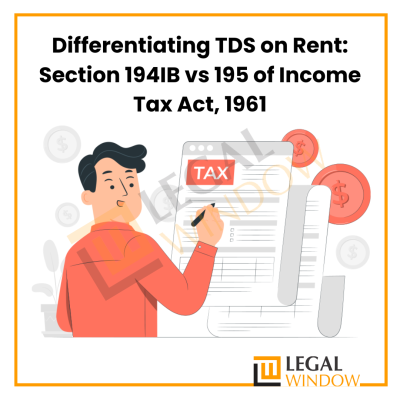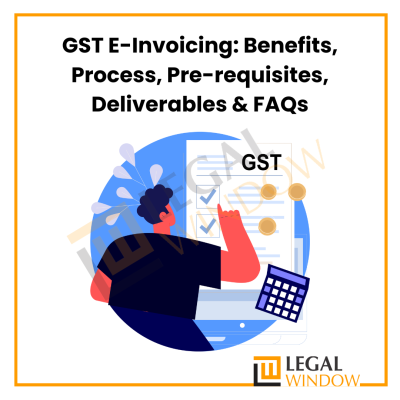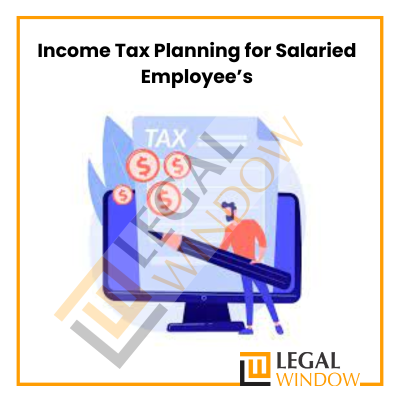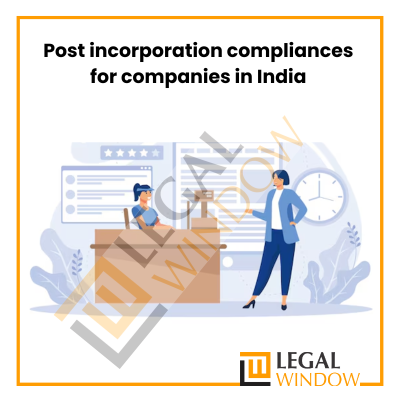Need of Cost & Management Accounting and its Role in providing Healthcare Services at Affordable Prices
- February 7, 2023
- Miscellaneous
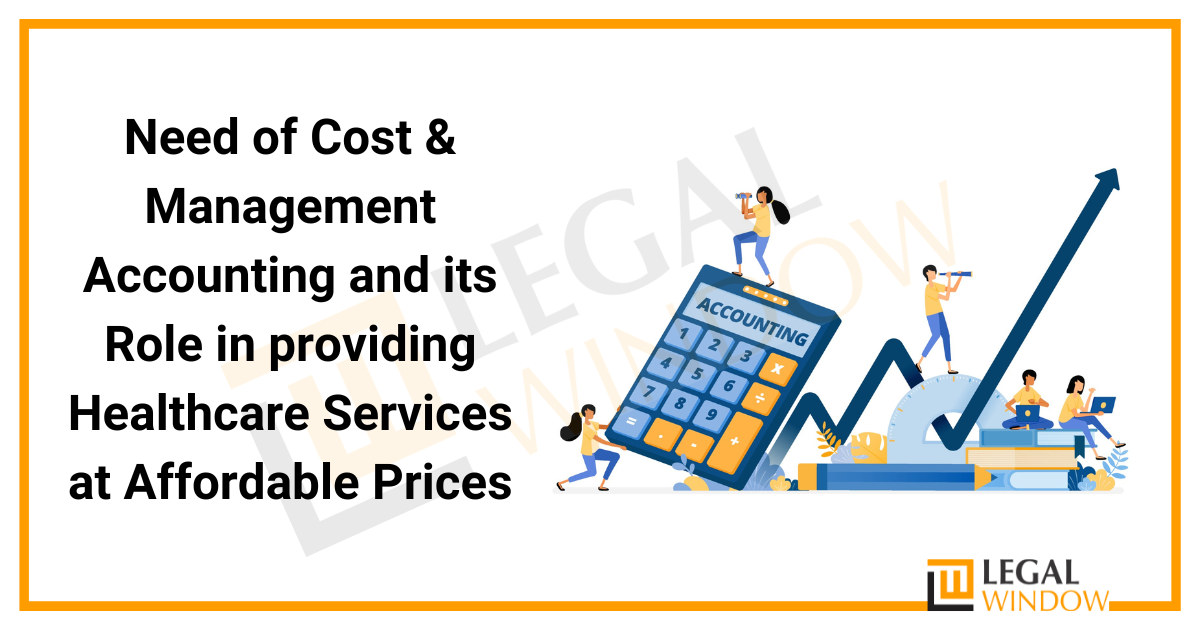
Finance and Accounting have grown in importance in today’s competitive business environment, where corporate organisations must provide an accurate and fair picture of their financial status. As a result, the use of accounting in the business sector has become an essential aspect. The Company Secretary must offer comprehensive and accurate information about the company’s financial activities to management for decision making. This emphasises the need of keeping accurate, up-to-date, and conforming books of account. In this article, we will discuss Need for Cost & Management Accounting.
Short Glimpse
The subject of ‘Cost and Management Accounting’ is highly significant and beneficial for making the best use of available resources. These are accounting areas that arose as a result of the constraints of financial accounting. It is an essential discipline for corporate management since the information gathered and given to management based on cost and management accounting methods not only helps management address particular problems but also directs them in decision-making. It is important for us to understand the concept of the cost before we delve into the need for Cost & Management Accounting & Role in providing healthcare services at affordable prices.
Concept of Cost
The amount of resources given up in return for particular products or services is referred to as the cost. Money or money’s equivalent represented in monetary terms are the resources given up.
The Chartered Institute of Management Accountants, London defines cost as “the amount of spending (real or notional) expended on, or related to a given object or activity”.
This activity of a company may be the production of a product or the provision of a service, both of which entail spending under numerous headings, such as materials, labour, miscellaneous expenditures, and so on.
A manufacturing organisation is interested in determining the cost per unit of the product created, whereas a service organisation, such as a transportation undertaking, canteen, electrical company, municipality, and so on, is interested in determining the expenses of the service it provides.
In its most basic form, the cost per unit is calculated by dividing the total expenditure by the total number of units produced or services delivered. However, this strategy is only effective if the manufacturer only manufactures one product. If the company produces more than one product, the total spending must be divided across the numerous items so that the cost of each product may be determined independently. Even if just one product is produced, it may be important to examine the cost per unit of each expenditure item that contributes to the total cost. When a large number of products are created, the situation gets more difficult, and it is important to break down the cost per unit of each product into several components of expenditure that make up the entire cost.
Concept of Cost Management
A specialised discipline of accounting known as cost accounting deals with the classification, accumulation, assignment, and control of expenses.
Cost accounting is described as follows by the C.I.M.A. London’s Costing terminology:
“The creation of budgets, standard costs, and real costs of activities, processes, products, and the study of variations, profitability, or the social use of money.”
Cost accounting differs from costing in that the latter merely offers the foundation and data needed to calculate costs. Once the data is made available, costing may be done mathematically using memo statements or by using the integral accounting approach.
Objective of Cost Accounting
Cost accounting is the systematic recording and analysis of costs in order to determine the cost of each product made or service supplied by an organisation. Information on the cost of each product or service would allow management to determine where to cut expenses, how to set pricing, how to maximise revenues, and so on. Thus, the primary goals of cost accounting are as follows:
- Analyze and categorise all expenses in relation to the cost of products and operations.
- To determine the cost of production for each unit, task, operation, process, department, or service and to create a cost standard.
Any inefficiencies and the level of different types of waste, whether of materials, time, money, or in the usage of machinery, equipment, and tools, must be reported to management. Analysis of the causes of disappointing outcomes may point to corrective actions.
To supply data for periodic profit and loss statements and balance sheets at such intervals, e.g., weekly, monthly, or quarterly, as the management may require during the fiscal year, not only for the entire organisation but also for departments or particular items. Also, in the profit and loss statement, must explain in detail the actual causes for profit or loss disclosed in total.
To identify the sources of manufacturing cost savings in terms of processes, equipment types, design, output, and layout. Daily, weekly, monthly, or quarterly updates may be required to guarantee timely and positive action. To offer real cost numbers for comparison with estimates, and to serve as a reference for future estimates or quotations, as well as to aid management in their price-fixing policies.
To show how standard costs are produced, what the cost of production should be, and how the actual costs that are finally recorded may be contrasted. To show comparative cost statistics for various time periods and output volumes. To provide information to enable management to make different short-term decisions, such as price quotations to special clients or during a slump, make or buy decisions, allocating priorities to various items, and so on.
Importance of Cost Accounting
Because of the limitations of financial accounting, management has recognised the need of cost accounting. Whatever the sort of business, it requires an expenditure on labour, materials, and other goods necessary for product manufacture and disposal. At each level, management must avoid the risk of waste. It must guarantee that no machine is idle, that efficient labour is adequately rewarded, that byproduct are correctly utilised, and that expenses are accurately calculated. Aside from management, the installation of a competent costing system benefits creditors and employees in a variety of ways. Cost accounting boosts an organization’s total production and acts as a key instrument in delivering wealth to the country. As a result, the value of cost accounting may be argued under the following headings:
- Costing as a Management Tool: Management benefits greatly from cost accounting. It delivers thorough costing information to management in order for them to keep effective control over stores and inventory, boost organisational efficiency, and reduce waste and losses. It makes it easier to delegate responsibility for essential tasks and rate personnel. For all of this, management must be capable of properly utilising the information given by cost accounts. The following are the numerous benefits that management derives from a good costing system.
- Cost accounting is useful during times of trade depression and competition: During moments of the commercial downturn, the organisation cannot afford unrestrained losses. Management must be aware of areas where savings may be made, waste avoided, and efficiency raised. The organisation must fight not just for survival but also for ongoing expansion. Before beginning on any price-cutting programme, managers should be aware of the true cost of their products. An adequate costing system makes this possible.
- Price determination is aided by Cost Accounting: Although the law of supply and demand affects the price to a large part, the cost to the producer is crucial. If the producer is in a position to set or adjust the price charged, he can draw the required direction from his costing data.
- Estimation is aided by Cost Accounting: Adequate costing records give a solid foundation for estimating and quoting tenders.
- Cost accounting assists in directing production to the Correct Lines: Proper costing information allows managers to differentiate between lucrative and non-profitable operations. Profits may be increased by focusing on productive operations and removing those that are not.
- Wastage is eliminated by Cost Accounting: Because cost accounting is concerned with the precise breakdown of expenses, numerous types of waste or loss can be identified.
- Cost accounting allows for Comparisons: Proper costing record keeping gives varied costing data for comparison, which aids management in formulating future courses of action.
- Cost accounting offers information for the Profit and Loss Account on a regular basis: Adequate costing records give the management the data needed to prepare the profit and loss account and balance sheet at the intervals requested by the management.
- Cost accounting assists in identifying and improving efficiency: If the numerous procedures involved in the production are closely investigated, losses due to material waste, idle time of workers, improper supervision, and so on will be revealed. Efficiency can be monitored, expenses can be regulated, and different methods to improve efficiency may be implemented.
- Inventory control is aided by cost accounting: Cost accounting provides the oversight that management requires in terms of material stock, work-in-progress, and finished items.
Cost Accounting Scope
Cost accounting has a broad scope that includes:
- Cost Ascertainment: The primary aim of cost accounting is to determine the cost of goods or services provided. It entails data collecting, expenditure analysis, and production measurement at various phases of manufacturing. For different forms of manufacturing, multiple costing techniques are required, such as historical costs, standard costs, process costs, operation costs, and so on.
It may be accomplished in two ways, respectively- Post-costing is the process of determining costs based on real information recorded in financial accounts.
- Continuous costing refers to a procedure of ascertainment in which cost information is provided as and when a specific action is finished, such that the total cost of a particular project is known the minute it is completed.
- Cost Control: In an age of competition, the objective of any business is to keep expenses as low as possible while maintaining efficient operating conditions. To sustain, it is necessary to assess each individual cost item in light of the services or advantages acquired in order to make the best use of the money spent or- it may be recovered. This necessitates preparation and the use of standards for each cost item in order to identify and correct any irregularities.
- Proper cost-to-revenue matching: In cost accounting, the management generates monthly or quarterly accounts to represent the cost and income data associated with the sale of that time.
- Management Aids Decision-making: Decision-making is the process of selecting between two or more options depending on the outcomes of those alternatives. A cost-benefit analysis is also required. All of this is possible with a decent cost accounting system.
Concept of Management Accounting
Every day, many transactions and events occur in every company enterprise: sales are made, purchases are made, costs are met or incurred, payments are received and paid, and assets are sold and acquired. These events, which result from management decisions and actions, have an effect on the enterprise’s operational efficiency and position. The majority of these interactions and occurrences have or can be quantified and expressed in monetary terms. Because they have an impact on the operation and position of the organisation, they must be measured, documented, analysed, and reported to management so that the management can assess their impact. Management accounting connects management and accounting.
Management accounting is concerned with all such information that is valuable to management. Management accounting is concerned with any information essential for decision-making. Management accounting, as opposed to financial accounting, offers information to internal users, despite the fact that the core data comes from the same accounting system, namely the financial and cost accounting systems.
Management accounting collects and disseminates accounting, cost accounting, economic, and statistical data to men at various managerial levels to aid in the execution of managerial duties and assessments. It is the creation and use of various strategies for capturing, analysing, interpreting, and presenting data in order to make financial, costing, and other data active and effective in the execution of managerial activities such as planning, decision-making, and control. It should be mentioned that management accounting employs both accounting and statistical and mathematical methodologies. Management accounting is forward-thinking, thus it should be able to process economic information and data so that it may be used by management.
As a result, management accounting may be defined as the processing and presentation of accounting, cost accounting, and other economic data, both historical and prospective, in order to aid in the performance evaluation of managerial tasks such as planning, decision-making, and control. Data processing and presentation entails the use of cost accounting, budgetary management, standard costing, break-even analysis, ratio analysis, finances and cash flow analysis, and other procedures.
Management Accounting’s Objective
The primary goal of management accounting is to help management in carrying out its obligations efficiently in order to maximise profits or decrease losses. It entails calculating strategies and budgets for all parts of the firm. Production, sales, distribution, research, and financing are some examples. Management accounting allocates responsibility for the plan and budget implementation in a methodical manner. It analyses all financial and physical transactions in order to provide an effective comparison between projections and actual performance.
The following are the primary goals of management accounting:
- To create Plans and Policies: Planning includes making predictions based on the facts at hand, establishing objectives, formulating policies, identifying potential courses of action, and selecting an activity schedule. It makes it easier to prepare remarks in light of past performance and provides projections for the future.
- In order to comprehend Financial Documents: The purpose of management accounting is to provide the management with financial data. Financial data must be presented in a way that makes it simple to understand. It uses statistical tools like charts, diagrams, graphs, etc. to portray accounting data.
- In order to aid in the Decision-Making Process: With the aid of several contemporary tools, management accounting strengthens the scientific nature of the decision-making process. For each of the available choices, data/information on cost, price, profit, and savings are gathered and then assessed in order to offer a foundation for making wise judgements.
- To assist with Control: For managerial control, management accounting is useful. Performance may be managed with the use of management accounting techniques like standard costing and budgetary control. The use of standard costing has an impact on cost management, and the use of budgets enables departmental control. Management accounting aids in the control of each and every person’s performance.
- To deliver a Report: Through reporting, management accounting keeps the management completely up to date on the situation of the business. It enables managers to make wise decisions quickly. It constantly updates senior management on the performance of several departments.
- To Make Operation Coordination Easier: Tools for total control and coordination of corporate activities are provided by management accounting. Budgets are a crucial tool for cooperation.
Management Accounting Scope
Financial accounting is a component of management accounting, which also covers the operation of a cost accountancy system, budgetary control, and statistical data. It places focus on the creation and maintenance of internal controls while still adhering to legal and traditional criteria for the preparation of financial statements (profit and loss accounts, balance sheets, and cash flow statements). The development, installation, and operation of accounting, cost accounting, tax accounting, and information systems are all included in the scope of management accounting. These systems must be built and rebuilt by management accountants to accommodate the shifting demands of management functions. The gathering and storage of essential data for management planning. Without the large amounts of information in the accounts and document files regarding the previous development of the business, making future projections would be extremely risky for the business.
The Management Accountant shows the management the historical data in a form that reflects the tendencies of occurrences. He is expected to examine the likely developments in pertinent sectors. A planning process can be effectively aided by such knowledge. The Management Accountant may occasionally be asked to collaborate with other members of the management team and even oversee the actual planning process.
The management accountant should always consider how to make existing procedures more practical. He should keep an eye out for the creation of fresh methods as well.
Therefore, management accounting provides a method of assessing the performance of the management itself in addition to acting as a tool in the hands of management. It serves as a double-edged tool that both helps management carry out its planning, decision-making, and control duties effectively and makes it possible for owners and other interested parties to assess and grade the management of the business.
Need of Cost & Management Accounting & Role in providing Healthcare Services at Affordable Prices
Hospitals are seen as essential community resources that should be managed for the good of the community in both developing and developed nations. India, a developing country, now boasts the sixth-largest economy in the world, with a GDP of $2.7 trillion. Since the right to health is closely related to the right to life, it is a fundamental right guaranteed to all Indian citizens under Article 21 of the Indian Constitution. According to our Constitution, the government’s first priority is to safeguard the welfare of the populace and provide access to healthcare for everyone. The right to life of each and every person must be protected by the government.
However, regular modifications to insurance coverage structures are encouraging people to compare hospital costs. Healthcare service providers may come under increasing pressure to set prices at levels that reflect the costs of providing care if these changes are to continue. If this is the case, cost accounting data will become a much more crucial component of hospital management. This is because hospitals’ patient volumes and revenues may increasingly be determined by the decisions of individual patients looking for low-cost services.
With price and quality serving as the foundation of competition, hospitals will be encouraged to lower their charges by reducing their underlying expenses. The costing method must be used for setting service prices. Only then will the hospital be able to provide the patient with the best deal while continuing to operate profitably. Hospital management may be compelled to cut operating expenses through price and quality competition, which will need a change in hospital pricing procedures. The costs of delivering each service must be taken into account when setting charges by hospitals.
Cost and Management Accounting Technique providing Healthcare Services at Affordable Prices
The dynamics of the healthcare sector can change significantly and significantly depending on how well costing procedures and cost management approaches are implemented. Both the service supplier and the people who use the services profit from effective cost management. For patients, precise operation and service costs will result in competitive pricing, making premium healthcare services accessible to vast segments of the population. Due to the low but not extremely low penetration of medical insurance, this is particularly significant in India. Effective cost management techniques, as well as their use and analysis, can alter the scope and dynamics of the healthcare sector for all parties involved.
Cost management will function like everything else in the industry in the new data-driven era. The majority of healthcare organisations are now employing traditional costing methods, which entail gathering data from multiple sources and categorising costs into distinct groups before calculating the overall cost of healthcare services. Traditional costing techniques, in my opinion, are widely used and accepted because they involve little administrative effort and/or financial investment. This makes them simple to grasp and execute.
However, these costing techniques have come under fire for creating incorrect and unrealistic estimates of a product or service’s true cost as well as for neglecting to take into consideration variations in product/service lines and marketing channels.
Role of Cost and Management Accounting in providing Healthcare Services at Affordable Prices
A list of medical treatment procedures and a standard template for pricing procedures and services have been authorised by the National Council for Clinical Establishments. The usage of these in calculating the average cost of any operation while taking into account all relevant elements has been advocated for State/UT Governments.
The cost of providing health services is incurred in three different departments, namely the Medical Service Department, the Medical Support Services Department, and the Non-Medical Department. Before moving forward, it is important to understand the heads of expenses, types of departments, activities, or services rendered or performed. Depending on the source data and the specific objectives of the healthcare industry.
To answer the question “How much cost is expended on an individual patient bearing in mind his condition & treatment facility,” we may sum up the costs incurred in these departments, which is also known as the total cost in layman’s terms.
Direct Cost and Indirect Cost are additional categories added to this department-specific total cost (Overhead Costs).
- Direct Costs: Direct costs are those expenses that may be directly linked to patient care. Nursing services, medications, medical supplies, diagnostic imaging, rehabilitation, and meal services are a few examples of direct expenses.
- Indirect Cost: Costs that are not directly associated with patient care are known as indirect costs. General administration, health records, information technology, physical plant and maintenance, human resources, volunteer activities, capital costs, and other regional services are a few examples of indirect costs.
Patients are charged based on the care they receive, the activities they carry out, the medical facilities they use, the procedures they follow, etc. However, until we have a proper costing system—that is, the hospital industry must have a proper cost for each activity carried out on a patient—the charges that are generated are incorrect.
Therefore, it is crucial to calculate the precise cost of each activity or operation in order to determine the total cost of care for each patient. To do this, a hospital must build effective cost accounting and profitability analysis tools.
Public and Private Healthcare Sector in India
Both the public and private sectors of the healthcare industry exist in India. Both businesses with a “profit motive” and those with a “non-profit motivation” make up the private healthcare industry. Non-Governmental Organizations (NGOs), charity organisations, trusts, and other organisations that offer healthcare services make up the “not-for-profit” health industry.
Governments at all levels—central, state, municipal, local, and peripheral—manage the public health sector, commonly referred to as publicly-funded government hospitals. Although providing for the general welfare and health is a State and Union concern, the central government makes a significant contribution through grants and officially sponsored health programs/schemes.
Steps of starting of Costing Process
The following is the process to start the costing process:
- Separate the income based on the services or activities provided.
- Divide the expenses by primary departments, cost centres, and service centres.
- Separate the expenses per department into direct and indirect charges.
- Determine the cost by activity or the services provided.
- List non-operating expenses and non-operating revenues.
- List the cost-related factors for each cost centre.
- Establish price pools
- Use a foundation for apportionment that is based on science
- Review service-specific revenue and expense data
- Separate the cost into its variable and fixed components.
Relevant Cost Model in order to determine Cost
The following cost models must be utilised in order to arrive at the scientific cost; they are used in accordance with factors such as size, foot traffic, service kinds, etc.
- Using a variable cost Approach
- The Total Cost Approach
- The healthcare package Approach
- An activity-based costing Approach
Only variable costs associated with the patient’s treatment, such as consultation fees, hospital-provided medications, nursing personnel assigned specifically to care for the patient, and other variable overheads, must be included in the variable cost method.
As a result, one may calculate pricing by simply multiplying the variable cost by the profit margin. When using the total cost technique, we must determine or compute the total direct, indirect, and fixed expenses. In light of this, determining to price is as simple as multiplying the profit margin by the entire cost.
In the case of health care packages, we must determine the direct cost of pharmaceuticals and consumables, the number of nurses assigned specifically to the patient (if any), variable overheads, as well as the percentage of fixed overheads.
In light of this, determining to price is as simple as multiplying the profit margin by the entire cost. The best way to determine the cost to the various departments would be to use the ABC technique. Based on cost drivers and cost pools, we must determine the costs associated with each and every action that is involved.
Each activity’s cost is tallied in accordance with the cost drivers. The hospital’s administration must check to see if the following records are being kept by the hospital in order to implement or determine the cost.
Essential Cost Records to be maintained
The following are a few examples of cost records that must be kept:
- Pharmacy supply department register wise
- Departmental supply register of surgical goods
- Department of Pharmacy Consumption Register wise
- Departmental utilisation of surgical products register
- Register for the record the number of hours worked by doctors, consultants, resident medical officers, and so on.
- Fixed assets, such as medical equipment, are listed by department and speciality.
- Utility register and amount of hours utility utilised
- Register of patients that come in and out
- Bed occupancy register (private room & general ward and class-wise)
- Surgical procedure log
- Test results register (different tests)
- General manpower registry
- Many more people sign up.
Cost Audit and Cost Records in the Health Care Sector
Companies (Cost Records and Audit) Rules, 2014 & Amendments:
- Any business engaging in “health services, meaning working as or running hospitals, diagnostic centres, clinical centres, or test laboratories” must keep expense records: &
- Having an overall turnover of rupees thirty-five crore or more from all its products and services during the immediately preceding fiscal year Must keep prescribed cost records in accordance with Form CRA 1 of the Rules, to the extent applicable.
- Companies that maintain hospitals only for their own personnel are exempt from the scope of these Rules; but, if such hospitals provide health services to outsiders in addition to their own employees on a fee basis, they are governed by these Rules.
Endnote
Both cost accounting and management accounting are performed within the organisation. Both share the same goals of supporting management in its tasks of planning, decision-making, and controlling, and techniques such as budgetary control, standard costing, and marginal costing owe their existence to cost accounting and have slid into the management accountant’s kitbag. There is a lot of overlap in their functions. The healthcare industry is in desperate need of change. The government must pay attention to every aspect of society. The government must supply and supervise healthcare services in order to provide inexpensive and high-quality care to all citizens.
However, regular modifications to insurance coverage structures are encouraging people to compare hospital costs. Healthcare service providers may come under increasing pressure to set prices at levels that reflect the costs of providing care if these changes are to continue. If this is the case, cost accounting data will become a much more crucial component of hospital management. This is because hospitals’ patient volumes and revenues may increasingly be determined by the decisions of individual patients looking for low-cost services.
Connect to our Expert at Legal Window, in case you feel any issues regarding the Need for Cost & Management Accounting & Role in providing Healthcare Services at Affordable Prices. Our Experts would be Happy to Help.
LegalWindow.in is a professional technology driven platform of multidisciplined experts like CA/CS/Lawyers spanning with an aim to provide concrete solution to individuals, start-ups and other business organisation by maximising their growth at an affordable cost. Our team offers expertise solutions in various fields that include Corporate Laws, Direct Taxations, GST Matters, IP Registrations and other Legal Affairs.
Categories
- Agreement Drafting (23)
- Annual Compliance (11)
- Change in Business (36)
- Company Law (148)
- Compliance (90)
- Digital Banking (3)
- Drug License (3)
- FEMA (17)
- Finance Company (42)
- Foreign Taxation (6)
- FSSAI License/Registration (14)
- GST (120)
- Hallmark Registration (1)
- Income Tax (202)
- Latest News (34)
- Miscellaneous (165)
- NBFC Registration (8)
- NGO (14)
- SEBI Registration (6)
- Section 8 Company (7)
- Start and manage a business (21)
- Startup/ Registration (130)
- Trademark Registration/IPR (40)
Recent Posts
About us
LegalWindow.in is a professional technology driven platform of multidisciplined experts like CA/CS/Lawyers spanning with an aim to provide concrete solution to individuals, start-ups and other business organisation by maximising their growth at an affordable cost.


